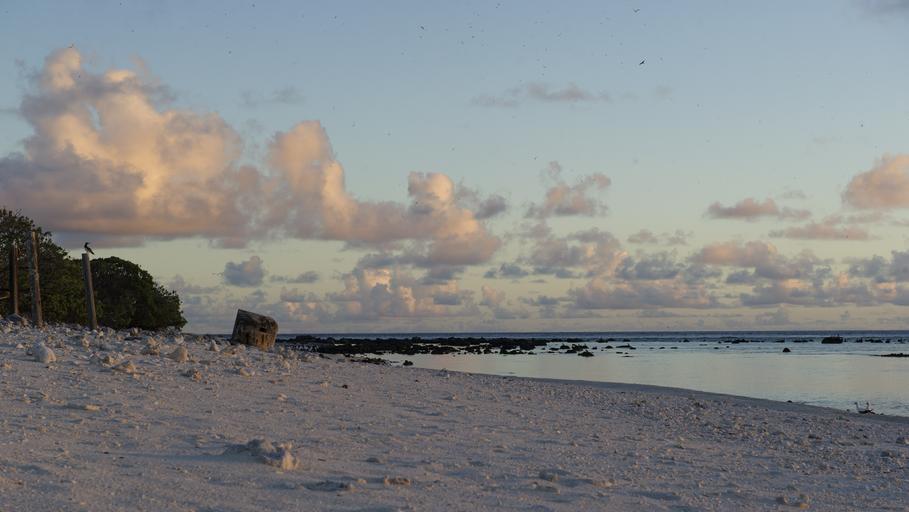MAKE A MEME
View Large Image

| View Original: | 20160605-F-BC061-155.jpg (4256x2398) | |||
| Download: | Original | Medium | Small | Thumb |
| Courtesy of: | www.flickr.com | More Like This | ||
| Keywords: usaf u.s. air force usairforce pacaf pacom wake island wakeisland jber joint base elmendorf-richardson jointbaseelmendorfrichardson prsc 611th asus 611thasus world war ii worldwarii wwii 75th anniversary 75thanniversary battle of wake island battleofwakeisland outdoor A World War II-era Japanese pillbox overlooks the shoreline of Wilkes Island, part of the Wake coral atoll, June 5, 2016, while migratory sea birds rest and fly nearby. The Japanese occupied the island from December 23, 1941 until their formal surrender in September 1945. Wake Island, "Where America's Day Really Begins," is an American possession in the middle Pacific within the Micronesia subregion, 2300 miles west of Hawaii and 2000 miles southeast of Tokyo. The coral atoll comprises three islands and roughly 2.8 square miles of dry land. In recognition of its importance during WWII in the Pacific and to thousands of species of sea birds, fish, and other oceanic flaura and fauna today, Wake Island is designated as both a National Historic Landmark and part of the Pacific Remote Islands Marine National Monument. A World War II-era Japanese pillbox overlooks the shoreline of Wilkes Island, part of the Wake coral atoll, June 5, 2016, while migratory sea birds rest and fly nearby. The Japanese occupied the island from December 23, 1941 until their formal surrender in September 1945. Wake Island, "Where America's Day Really Begins," is an American possession in the middle Pacific within the Micronesia subregion, 2300 miles west of Hawaii and 2000 miles southeast of Tokyo. The coral atoll comprises three islands and roughly 2.8 square miles of dry land. In recognition of its importance during WWII in the Pacific and to thousands of species of sea birds, fish, and other oceanic flaura and fauna today, Wake Island is designated as both a National Historic Landmark and part of the Pacific Remote Islands Marine National Monument. | ||||